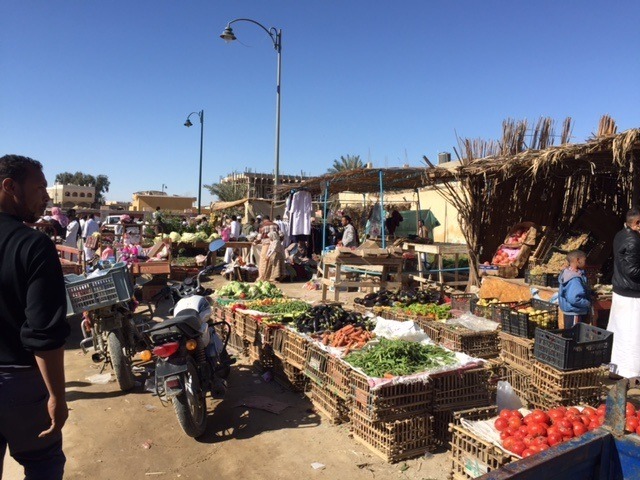Egypt's Siwa Oasis Casts An Enchanting Spell
Pyramids? Check.
Cairo? Check.
Luxor? Valley of the Kings? Check. Check.
Even those lucky and intrepid enough to visit Egypt repeatedly may miss one of its unique destinations: the Siwa Oasis.
Unless you're Alexander the Great, it's doubtful you've made it to this desert refuge — mostly because it's very hard to get to. In fact, when a 55,000-man Persian army tried to visit in 550 B.C, they were swallowed by the immense desert, never to be seen again.
Now at least there's a road. Even still, it's a good six-hour drive from Cairo — or it would be if you didn't have to stop every couple of hours to produce your passport for the authorities. Even I, intrepid traveler that I am, started wondering after the fifth stop by armed guards: Why was it again I wanted to visit this remote outpost?
But within 15 minutes of arriving in this fertile Berber enclave on the edge of the Eastern Sahara's Great Sand Sea, every concern and every bumpy mile evaporated into gratitude.
According to legend, Alexander the Great made it to Siwa in 332 B.C. by talking with snakes and following crows across the desert. He traversed the 150,000-square-mile ocean of sand to consult with the Oracle of Amon, the great sun god who is honored with a 3,000-year-old temple that stands yet today. Unlike Mr. Great, who was told by the ancient oracle that he was the Divine Big Cheese and the rightful head of the gods and Egyptian pharaohs, I was told I should keep writing books.
I can't complain. Standing on the edge of the limestone temple that sits like a floating white island above green palms, I was struck wordless as I looked out over the tops of date palms and olive trees across the Montana-sized white sand ocean that separates Egypt from Libya.
Even though it's now possible to safari out into the Great Sand Sea, finding words to describe the experience is virtually impossible —for my money, it's the best example of the phrase "you really have to be there." The dictionary has yet to add words that can adequately describe the pure vastness, the expanse, the colors, the sounds, and the thrill of roller-coastering up and down the dunes as fast as your jeep will drive. Even photos, with their 1,000-word value, can't convey the experience — the immersion of silence found in this ocean of soft white sand.
After managing to close our gaping mouths and rise from our knees where we had knelt in awe, we spent our day in the Great Sand Sea lounging in hot springs (there are hundreds, many with medicinal properties), sand-boarding down 70-foot dunes, and sipping lemongrass tea as the sun spread its magnificent setting colors across the landscape.
Even though Siwa is located on the old date caravan route (sort of a no-brainer when you have 300,000 date trees), it wasn't much explored by Westerners until World War II, when clandestine German and British desert patrols, including that of Count Laszlo Almasy — you might know him as the English Patient — came to spy.
Because it's so remote, Siwa is quite distinct from other parts of Egypt and has retained a mostly Berber culture for some 13 centuries. Girls tend to marry by age 14, so the winding dirt streets with more donkey carts than cars are mostly filled with young children, veiled women, and hospitable men selling local produce, finely embroidered woven crafts, Berber jewelry, salt lamps, and candle holders.
Slouching mud and salt brick buildings host storefronts (we were even able to buy a pair of fake Armani sunglasses), quaint restaurants, and charming hotels and B&B's.
After visiting the Temple of the Oracle, we headed out to Cleopatra's Bath, Siwa's most famous spring — which, despite its name, never actually hosted the famous Egyptian queen. The springside Tanta Waa juice bar is owned by a delightful English-speaking Egyptian who attended the same prep school as Omar Sharif. He was playing Wanda Jackson hits as I sat drinking a mango smoothie. Listening to her rockabilly version of "Kansas City," I thought to myself: It is a very small world.
I'll be forever grateful to Jane Bolinowsky and Sarwat Hergazy of Egypt Unveiled for introducing me to this amazing place. To find out more, check out their website: www.egyptunveiled.com.
